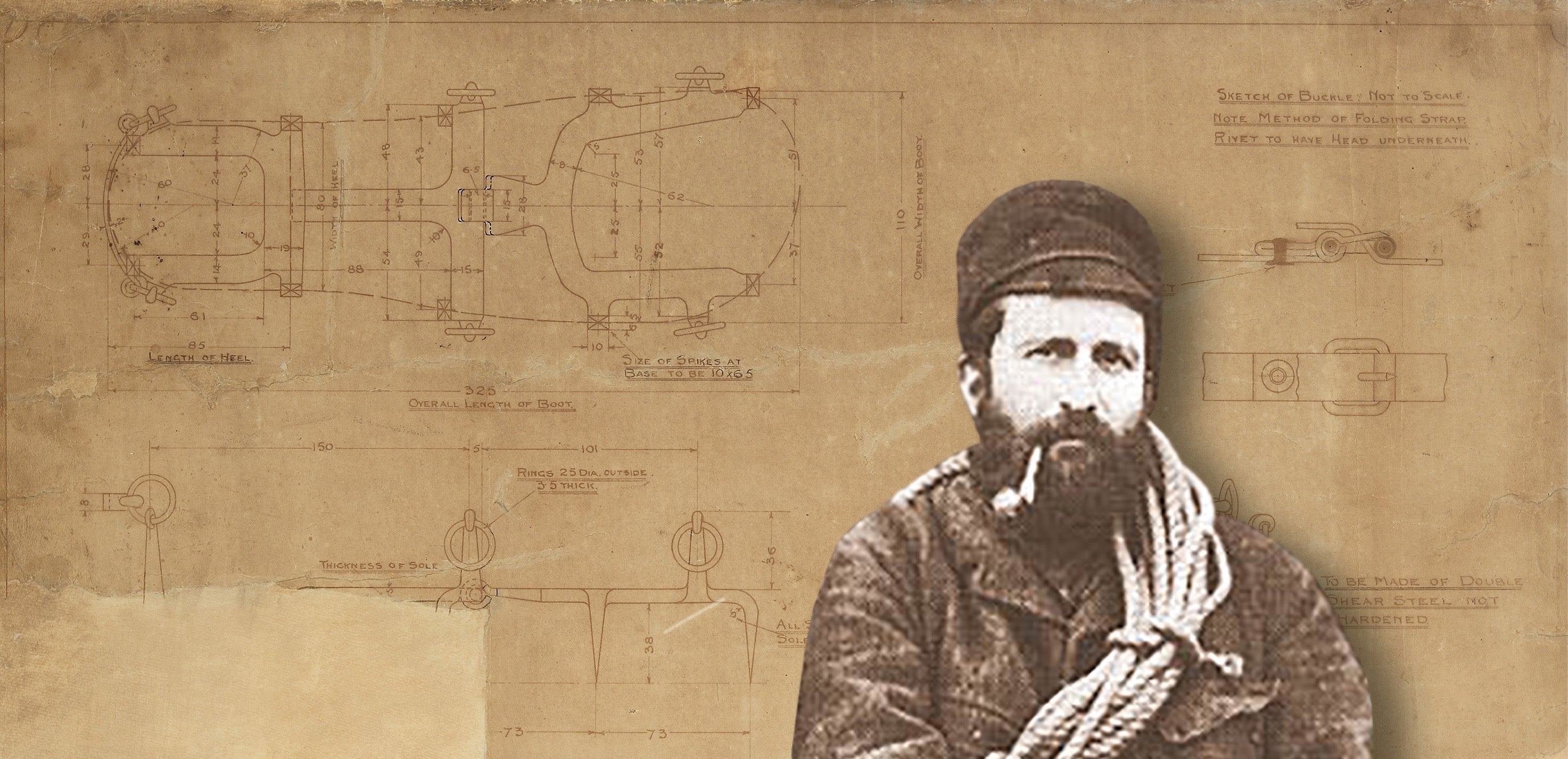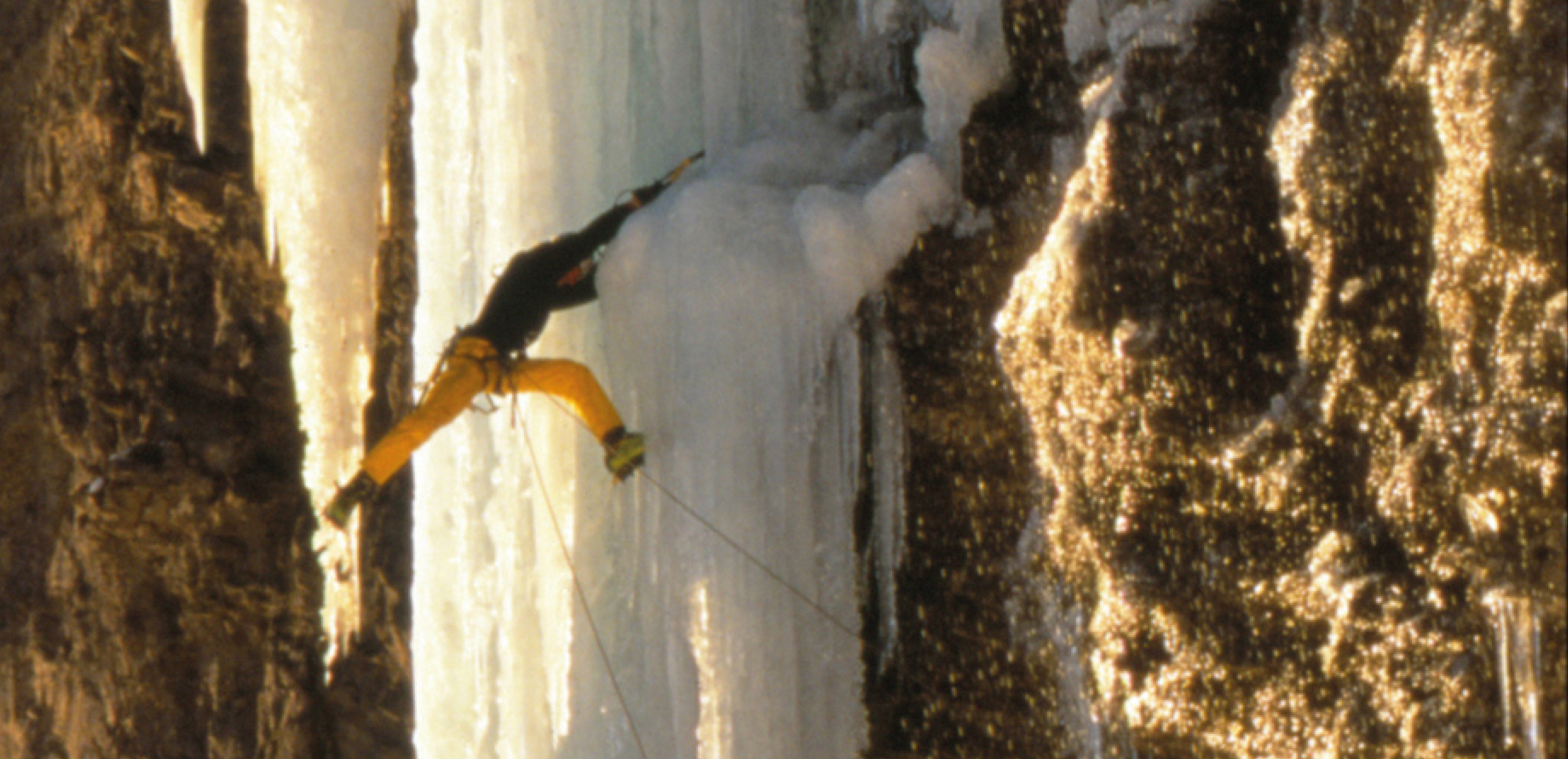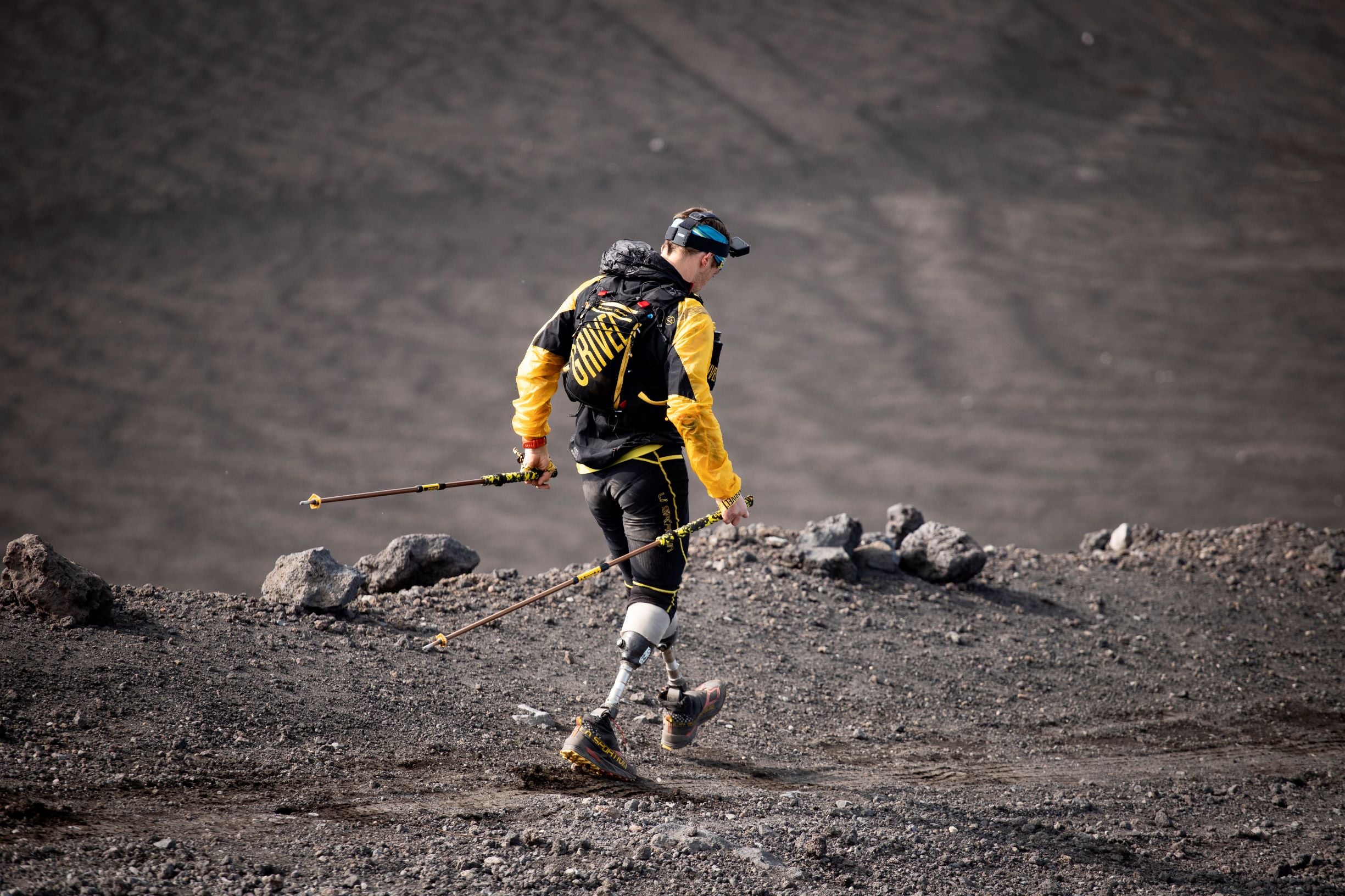
The engineer, the crampon and the beast by Marina Morpurgo
Published on 26/03/2021
Courmayeur, 1909. A badly dressed guy with a big brown beard enters the workshop of the blacksmith Henri Grivel, with a drawing in hand: it is that of a ten-pointed crampon, which Grivel should forge. The blacksmith does not seem very convinced, he hesitates, he certainly does not think to have under his eyes the project of a tool that will revolutionize the climbs on the ice, freeing mountaineering humanity from the enormous effort of cutting steps on the slopes with ice axes.

How to blame Grivel? The guy is English, he is called Oscar Eckenstein (his father was a Prussian Jew of revolutionary sympathies, fled to London to avoid reprisals after the failure of the German uprisings of 1848), and his rough and hairy appearance prevents to seize instantly the brilliant and analytical mind of that railway engineer, scholar of materials and forces and mathematical talent, as well as rough and courageous mountaineer.

He does not inspire a lot of trust, Eckenstein. With a little grace, they say of him that he has a primitive body, like an ape. Perhaps there is envy because the climber, a former gymnast, performs pull-ups on one arm only, and has an uncommon force - but this physical strength does not distract him from wanting to study the movements of climbing to transform it into a matter of balances, where the use of the feet has more importance than the musculature of the arms. As we said he dresses very badly, disdaining the conventions: even in the city he wanders, in both summer and winter, with poor sandals of rope, he wears a Greek fisherman cap and smokes a tobacco though a smelly pipe.

Henri Grivel faces a man who seems to him a half crazy, in short. On the other hand, it is not a rare feeling, in front of those first mountaineers who came from afar. A paragraph appeared on the Evening Express of 7 July 1907 reports the arrival at "Courmeyeur" of the same Eckenstein, coming back from a camp at high altitude: the chronicle explains that the members of the group had been given up for dead since they had not been seen for a while, and that in any case the villagers had reacted "with bland interest" also because they were convinced that those men "should be crazy". Who knows if the chronicle is reliable: the suspicion is born because "Courmeyeur" according to the writer of the article is in Switzerland ...
In any case, Henri Grivel lets himself be convinced - Oscar Eckenstein demonstrates the will and the ability to pay the prototype - and this is very good: that crampon, which as the only real defect weighs a little less than a kilo and a half, is destined to big things. And Eckenstein introducing the use of crampons also draws and builds an ice axe with a short shaft, anticipating the times.


By contrast, the fate of Eckenstein always remains that of not being recognized, to be perpetually marginalized, especially at home - marginalization to which two elements certainly contribute: he is Jewish, in an environment where anti-Semitism is felt, and moreover he is even socialist. Let's add the grouchy and arrogant character, and there we are. The idea of the crampon is welcomed with coldness by the Alpine Club, a group with which Eckenstein has bad relationships: for the club these are poor meanas, it is cheating compared to the purity of the climb with boots with nails. The “grappette”, those pointy gadgets that dating back to antiquity someone has thought of fixing under the soles so as not to slip - hence the great-grandparents or great-great-grandparents of the crampons - were things for shepherds or farmers or hunters, and such must remain: the real mountaineers do not use them. With a move that we could define brilliant marketing, Eckenstein on 30th June 1912 to demonstrate the goodness of the invention organizes a race on the seracs of the Brenva glacier. At the "Concours de Cramponneurs" the Courmayeur guides and porters participate, challenging themselves in style and speed.

But once again the engineer seems too ahead and too modern for the plastered-up ranks of the Alpine Club. He then provocatively writes in his Advice to young climbers that true champions must be sought outside of the hierarchies of mountaineering: you can tell the real ace if he uses crampons, and if he can balance on one leg on 70 degrees smooth ice slope, without cutting steps.
Eckenstein is made like this, aggressive and direct, a difficult guy, an original one, one who does not hesitate to declare that if they allowed him to tie a cow by its legs he would take it to the top of the Matterhorn.
In short, he puts some of his own in being marginalized, to the point that when in 1921 he dies of tuberculosis (or "consumption", as they say at the time: among other things, he suffered from asthma throughout his life) nobody writes and publishes a his memory, even if the British are masters in the "obituary": the "enemies" of the alpine club do not honour him, although Eckenstein spent time with some of them, but even the Climbers Club ignores him, even if he was among its members, and among the collaborators of its magazine, especially for the pages of climbing technique (among advice of Eckenstein, a boulderer ahead of his time, is to use every part of the body to grab the rock, from chin to mouth and elbows).
This bad temper of his led him to bind with another mountaineer sui generis, one who enjoys a far worst fame than that of the railway engineer: Aleister Crowley (born Edward Alexander Crowley), writer, occultist, passionate about sexual-magic rituals. Crowley is a rich and eccentric young man, he loves to be called "the beast 666" - a nickname given with anger by his mother, not exactly enthusiastic about the decadent lifestyle of the son, who loves to present himself as a being devoid of moral brakes and of feelings recognized as acceptable and decent.

Crowley is 17 years younger than Eckenstein, and has a veneration for his most experienced companion. They met in the Lake District, in 1898. They are a strange couple, also because Crowley is a good mountaineer, but from a human point of view he is not exactly the ideal climbing companion. Some traits of his character today can only seem ridiculous, as a "poser", as highly egocentric: like during the attempt on K2 (Eckenstein is the expedition leader, Crowley is his vice) when he insisted on bringing to the base camp an entire library, with "Milton and everything else", and a discussion is born. However, much more serious things happen: during the climb Crowley points a big gun at the other English mountaineer of the group, Guy Knowles, when he refuses to continue to climb in the storm and he threatens to kill him, until he is disarmed with strength. The most benevolent Crowley biographers will blame this to a delirium from malaria fever, of which the alpinist-satanist suffers.

The expedition stops at about 6,700 meters of altitude, a record for the time: the weather is bad and an Austrian component of the team has a pulmonary oedema. On the other hand, the expedition had started already under a bad star. In Rawalpindi Eckenstein had been stopped and arrested with the suspicion of being a German spy (with that surname!), a very bad suspect in those years in which the Germanic imperialist aspirations were already a scarecrow. To add a bit of colour there is a rumour around that the harmless engineer, passionate about yoga and other oriental disciplines, was a cold blood killer. Being able to leave for Kashmir had been a challenge, Eckenstein had to contact Lord Curzon personally, Viceroy of India. The most accredited hypothesis, still today, is that the story of the spy was a revenge of Sir William Martin Conway, aristocratic president of the British alpine club, one of the many enemies for life that Eckenstein had made in that environment: in the 1892 Conway had invited him to participate in a Karakorum expedition, and the two had quarreled furiously until Eckenstein left.
Who knows if it is precisely the fact of being an outcast in the mountaineering world, each in his own way, to keep them together, despite the differences of age and mentality (Eckenstein is very interested in meditation, but finds the magic practices that Crowley enriches with an abundant of drugs ridiculous; Crowley shows off the money, Eckenstein is such an austere type that many consider him a poor man, when he is not at all). But in short, the two will never have a real break and this is a miracle, especially considering the flaws of Crowley. The most sensational manifestation of these very serious character flaws of the occultist mountaineer is in 1905, during an attempt to Kanchenjunga passing through the Yalung glacier. Crowley is the expedition leader, while Eckenstein did not want to be part of the group, using many excuses to resist the insistence of the invitation: the attempt ends in tragedy, four components are killed by an avalanche during the descent from camp 5. Things that unfortunately often happen in the Himalayas, but it doesn't often happen that the expedition leader remains in the sleeping bag to drink tea, refusing to help relief and indifferent to desperate distress calls of survivors - and this happens after days of quarrels and mutinies, with the porters terrified by Crowley, who beats them with a stick when he is in a bad mood. This English mountaineer is technically good, and he has brilliant intuitions that he credits to magic and not to the intuition that only great climbers possess: but who would like such a companion?

By contrast, with Eckenstein they climbed together for years, in Mexico where between one summit and the other one they eat Danish canned butter and Champagne, and in the Alps, where the younger Crowley consents to the skill and courage tests that Eckenstein, who has a passion for teaching, imposes to him: he is allergic to any form of authority, but he recognizes that of his friend and teacher. Crowley, who quarrels with everyone, and criticizes and breaks relationships, writes with sadness in his Confessions that only the unhappy conclusion of the life of the partner "with tuberculosis and marriage" (sic) came to spoil the plans of that brilliant mind …

Marina Morpurgo, after working as a journalist became a literary translator from English and author of history books for schools. She has published fiction and non-fiction for children with Feltrinelli, and short novels and stories with the Astoria publishing house. The latest fiction book "È solo un cane (dicono)” was re-released in extended edition in 2020.
She loves fresh snow, dogs, ice cream, and granite slabs, while she hates traverses and anything that is overhanging.
Portrait © Gli Sfacciati


